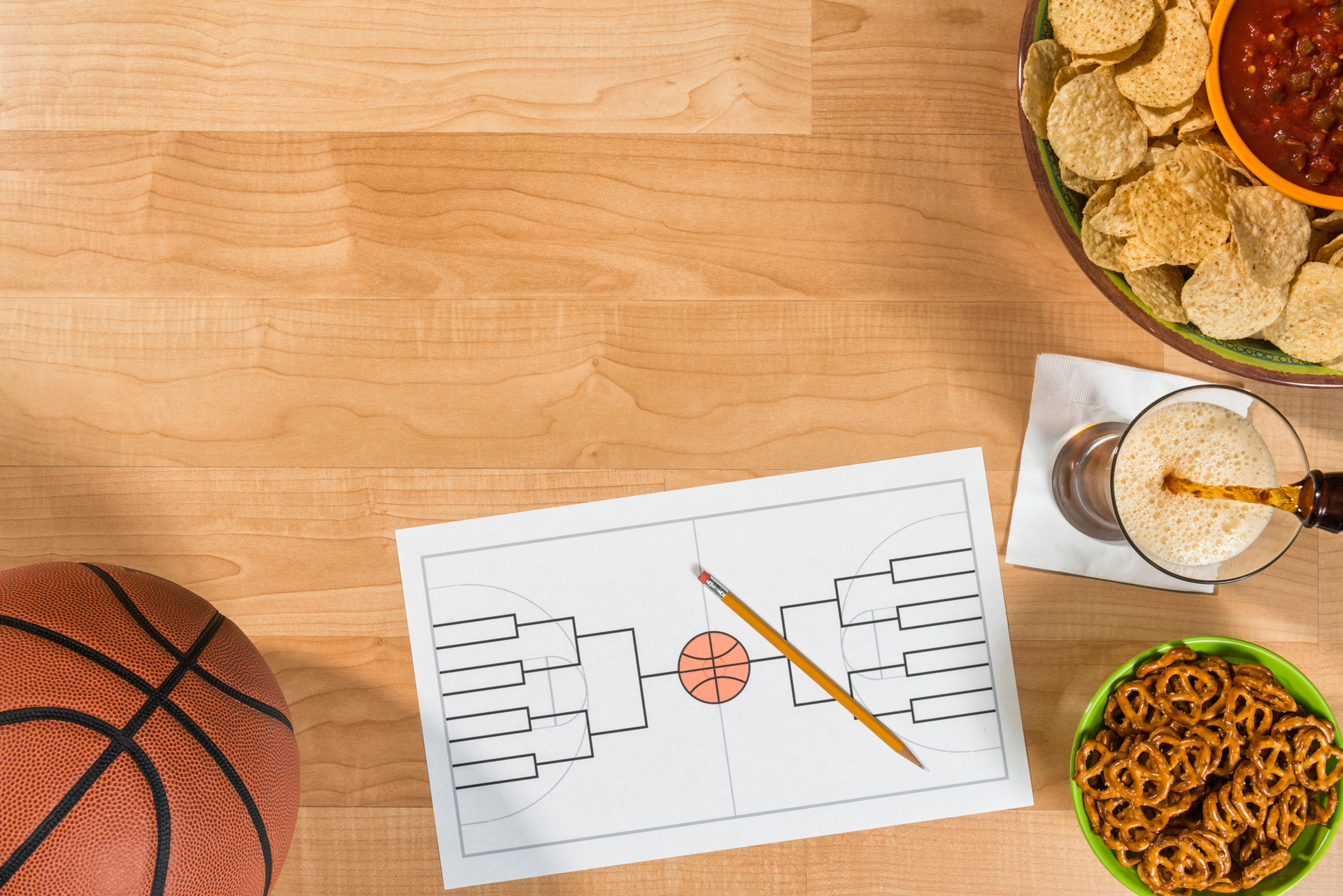See our ongoing coverage of how marketers in live events engage with Connected Fans in the NBA G League, Minor League Baseball, Premier Lacrosse League, Women’s World Cup, esports and Broadway. More stories to come.
Only 16 basketball squads remain alive in the men’s Division I national tournament, known colloquially as “the big dance.” Conventional big-splash advertising is just beginning to ramp up, as later-round games take on the importance and visibility of bowl games unto themselves. Although memorable moments in years past often involve unlikely upsets and captivating runs by “Cinderella teams,” the narrowing field this year includes most of the front-runners we expected to see. Programs like Duke and UNC have national followings, media coverage and merchandising that rival storied pro teams across all sports. And a large part of these teams’ legacies involve the legendary pros who made their names way back when, at tournament time, representing these schools. As with the Super Bowl and MLB’s fall classic, playoffs leverage past, present and future.
But if you’re a sports fan, or just a good sport, and you filled out a bracket to compete with friends or coworkers, there’s a good chance you don’t have much left to root for. The many brands and media properties that host tournament brackets take advantage of the unique hands-on engagement arising from the yearly ritual of filling out each round and the supplemental trash talking that is all a part of March Madness. After conference championships and selection Sunday, the hype reaches fever pitch, leading to the first round hoops fest on the following Thursday and Friday. Then, everybody’s perfect brackets get blemished or entirely demolished.
Marketers, however, are prepared for this understandable slump after the first week, and do all they can to keep the momentum going. I spoke with Michael Dub, an online marketing specialist and Partner at DXagency. He was bouncing back from the first week blues after his Syracuse team was eliminated in the opening round by Baylor. (I sympathized a little, as I had the Orangemen into the Sweet Sixteen in my bracket.) For Dub, March Madness, as a multi-week event, represents a “cornucopia of marketing.” He noted that Buffalo Wild Wings is a good example of how a brand can capitalize on the basketball fever and make it sustainable. The wings and beer chain supported a bracket challenge at the beginning of the tournament through loyalty and rewards, at their “Blazin’ Rewards” hub.
“For years now, brackets have been irresistible in terms of filling them out,” Dub told me. “Buffalo Wild Wings has been notable because their brackets promotion ties into rewards, making it a brand experience. Choice facilitates a series of subsequent choices, making brackets a natural engagement opportunity, with the ability to insert messages and rewards.”
He added, “In terms of engaging fans, what brands are able to do is offer a less-traditional bracket, allowing you to reset your brackets. This way, it’s less about a specific game matchup.” In the case of Buffalo Wild Wings, their “unbustable bracket” promises a fresh start every day of the tournament, with new prize opportunities for every participant.
Advances in technology have allowed the tournament and marketing tech to grow together into what we have now, what Dub calls a “perfect storm” for omnichannel strategies. Geofencing, for instance, allows gambling sites to message consumers in specific states, in compliance with specific laws in each state. Acura’s #SuperHandling social media activation brings together fans and influencers through video sharing, amplified by traditional TV coverage, in the form of ESPN personality (and former Duke star) Jay Williams.
“Why I love the SuperHandling Challenge so much is because it brings in user-generated content, earned media, and gives the professional treatment to the user-generated content,” Dub explained. “Not only is there an affiliation with the brand, but it ties into a number of best practices across channels.”
According to Dub, “the technology has gotten better and images are still the currency of the web.” Only recently have brands been able to fully take advantage, so that users can share all of this content. “Distribution channels have gotten bigger, better and more efficient,” he said. One glimpse into the future that Dub is eyeing intently is virtual reality, specifically in the form of Oculus VR’s March Madness app. Placing a fan courtside, in a virtual space, opens up new levels of personalization, where brands can be inserted into the fan’s experience.
The next level of sports experiences will be attractive to any fan, especially if they are personalized. But the March Madness event also provides specific opportunities to connect with true fans and alums of a particular school, with the precision and timing that instant communications enables.”
“Schools can communicate at the moment when alumni are feeling great about their school,” Dub stated. “We hear about a big application spike during a great tournament run. From a direct marketing perspective, this is a huge opportunity. Similarly, from a paid perspective, schools will be able to target those folks – LinkedIn is an important paid media platform, targeting people while working.” In his estimation, all schools should be prepared with customized messaging, just as they do in the lead up to a bowl game, which is also a critical stop on the “communication journey” with a school’s following.
“Really what this represents is a three-week campaign devoted entirely to a journey,” said Dub. “During this journey, or ‘mini-journey,’ marketers are thinking about how we are taking our customers through the rounds. It’s very much like a conversion funnel. As the tournament moves forward, messaging gets more targeted. What are the rewards we received or goals we accomplished?”
This renewed hope (and free wings) is the least that marketers can offer to a hoops fan with a busted bracket.








